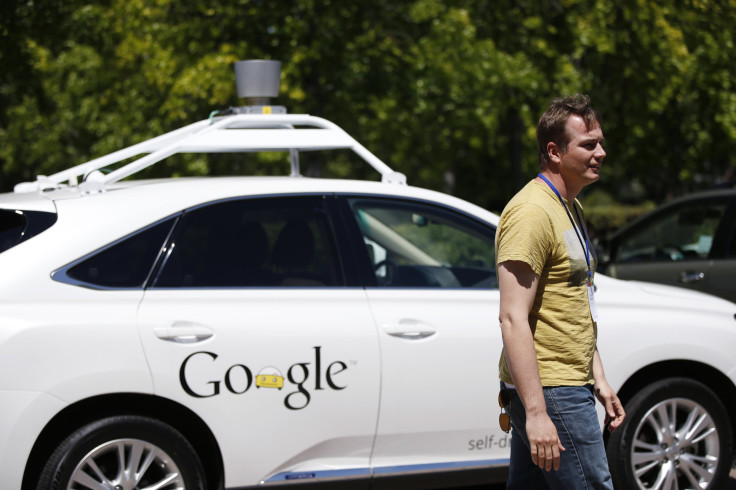Google’s Self-Driving Car Prototype Unveiled: Software And Sensors Do All The Work [VIDEO]

Google Inc. (NASDAQ:GOOGL) has unveiled a prototype of its fully autonomous self-driving car that has none of the usual controls found in a conventional car. With no steering wheel, accelerator or brake pedals, users only have to push a button to operate the vehicle.
Google’s co-founder Sergey Brin revealed the two-seater prototype at Re/code’s Code Conference in Palos Verdes, Calif., on Tuesday, and said that the car is equipped with a software system and built-in sensors to safely maneuver the vehicle. Google is exploring how fully functional self-driving vehicles would work by building prototypes, which will eventually lead to a car that will operate safely without human intervention.
“The project is about changing the world for people who are not well-served by transportation today,” Brin said, at the conference. “There’s not great public transportation in many public places in the United States.”

“The vehicles will be very basic—we want to learn from them and adapt them as quickly as possible—but they will take you where you want to go at the push of a button. And that's an important step toward improving road safety and transforming mobility for millions of people,” Chris Urmson, director of the Google Self-Driving Car Project, wrote in a blog post.
The self-driving car is equipped with sensors that remove blind spots and can detect objects from a distance of more than two football fields in all directions -- features designed to help the vehicle operate on busy streets with many intersections. The prototype car has a maximum speed limit of only 25 miles per hour, giving it more time to react to obstacles.
According to Google, the cars, which have racked up 700,000 miles of testing, are designed for learning, not luxury, and feature two seats with seatbelts, a space for passengers’ belongings, buttons to start and stop, and a screen to display the route.
Although the search engine giant’s self-driving cars can handle most real-life traffic situations, two Google employees -- ready to take over control at any moment -- carefully monitor the vehicles every time they are on the road, Re/code reported.
“We’re planning to build about a hundred prototype vehicles, and later this summer, our safety drivers will start testing early versions of these vehicles that have manual controls,” Urmson wrote. “If all goes well, we’d like to run a small pilot program here in California in the next couple of years.”
Check out the video here:
© Copyright IBTimes 2024. All rights reserved.












